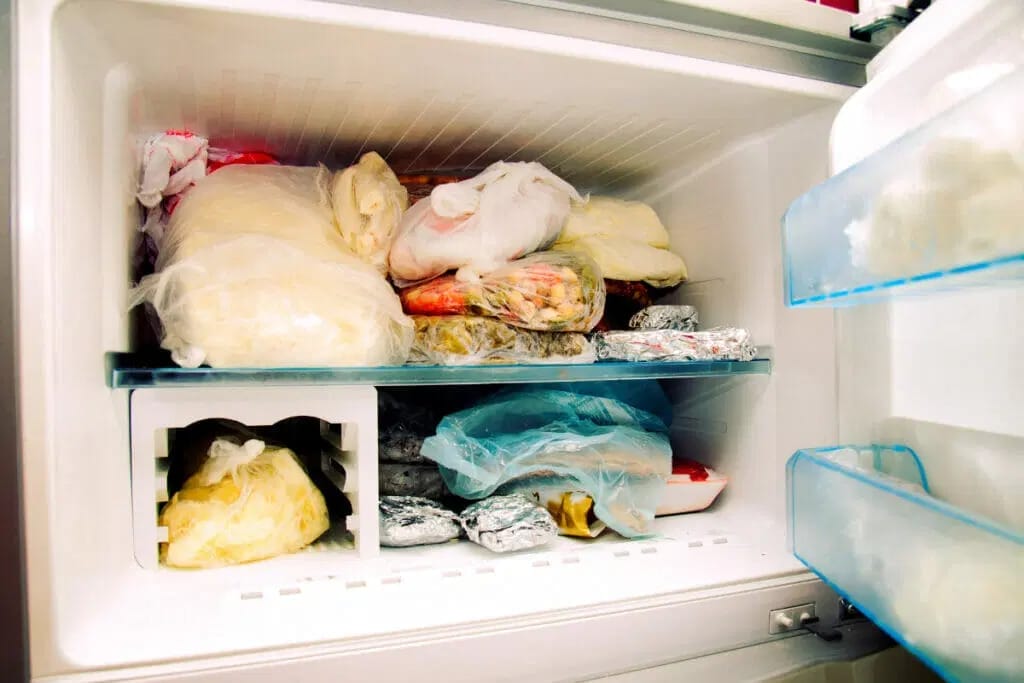As an Amazon Associate, I earn from qualifying purchases. In addition, I participate in several other affiliate programs that allow me to earn while I recommend products I love.
Fondant, with its smooth and flawless finish, has become a staple in cake decorating and confectionery, elevating ordinary desserts into edible masterpieces.
As bakers and cake enthusiasts, we often find ourselves with leftover fondant after a project or considering buying in bulk to save money.
This leads to the inevitable question: Can you freeze fondant?
Will it retain its texture, pliability, and appearance after being frozen?
In this guide, we explore the ins and outs of freezing fondant, including, “can fondant be frozen?” and guiding you through the dos and don’ts to ensure you make the most of this versatile cake decorating medium.

What is Fondant?
Before diving into the world of freezing fondant and whether you can freeze fondant icing, let’s briefly understand what fondant is.
Fondant is a versatile sugar-based dough that can be rolled out into thin sheets and draped over cakes, cookies, and other confections.
It consists of sugar, water, and glycerin, which give it a smooth, pliable, and elastic texture.
Fondant comes in various types, including rolled fondant, modeling fondant, and poured fondant, each serving different purposes in the realm of cake decoration.
Can You Freeze Fondant?

The short answer is yes, you can freeze fondant.
Can you freeze fondant decorations?
Also, yes!
However, there are important factors to consider before popping your fondant into the freezer.
Freezing fondant may alter its texture and consistency, affecting its ease of use in cake decorating.
It’s essential to determine the intended use of the frozen fondant and how it may impact your cake designs.
One key concern is the potential loss of elasticity and pliability.
After thawing, frozen fondant may become sticky or challenging to work with, making it less suitable for intricate decorations and designs.
Additionally, certain fondant additives, such as gum paste or chocolate, may not freeze well, affecting the overall quality and appearance of the fondant.
Freezing Fondant: Dos and Don’ts
If you decide to freeze fondant, follow these essential dos and don’ts to ensure the best results:
Dos:
Prepare the Fondant for Freezing: Before freezing, knead the fondant to ensure uniform consistency and remove any air bubbles. Divide it into small portions to avoid the need to thaw the entire batch when you only require a small amount.
Wrap and Package Properly: Wrap the fondant tightly in plastic wrap, removing as much air as possible. Place the wrapped fondant in an airtight container or freezer bag to prevent freezer burn and unwanted odors.
Choose Suitable Storage Containers: Opt for containers specifically designed for freezing, ensuring they are clean and dry before storing the fondant.
Don’ts:
Freeze Fondant with Additives or Fillings: Fondant with added gum paste or chocolate fillings may not freeze well. If your fondant has been mixed with other ingredients, avoid freezing it to maintain its quality.
Freeze Fondant Multiple Times: Repeated freezing and thawing can lead to significant changes in the fondant’s texture, resulting in a less desirable consistency.
Thawing Frozen Fondant
Thawing frozen fondant requires careful consideration to restore its texture and pliability.
Move the frozen fondant to the refrigerator and allow it to thaw slowly overnight.
Avoid exposing the fondant to temperature changes, as condensation can cause it to become sticky or lose its smoothness.
Once thawed, knead the fondant well to bring back its elasticity and make it easier to work with.
Alternative Storage Methods
While freezing fondant is an option, there are alternative storage methods to consider.
Refrigerating fondant can extend its shelf life for a short period, but avoid refrigerating it for an extended time, as it can become sticky and lose its shape.
For long-term storage, keep fondant at room temperature in a cool, dry place, away from direct sunlight and moisture.
Practical Tips and Ideas
Using frozen fondant in cake decorations and confections can yield stunning results if done correctly.
Consider using frozen fondant for large cake covering projects or simple decorations that don’t require intricate detailing.
Thawed fondant can also be utilized creatively in baking projects, like rolling it into fun shapes or creating marbled effects for unique cake designs.
Additionally, repurpose leftover fondant from previous creations to minimize waste and get the most out of your supplies.
Hey! Want to learn more about fondant? Check these out!
